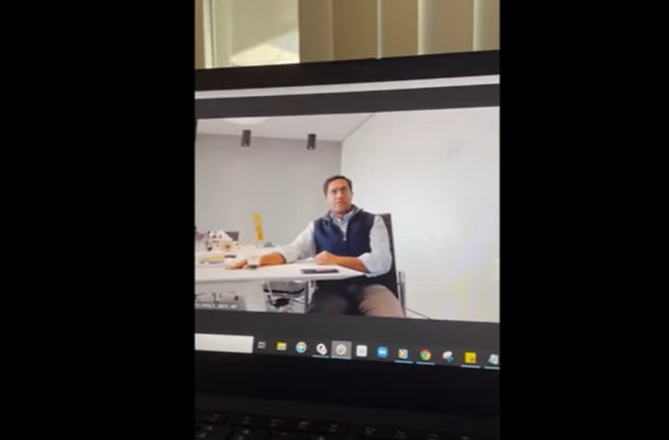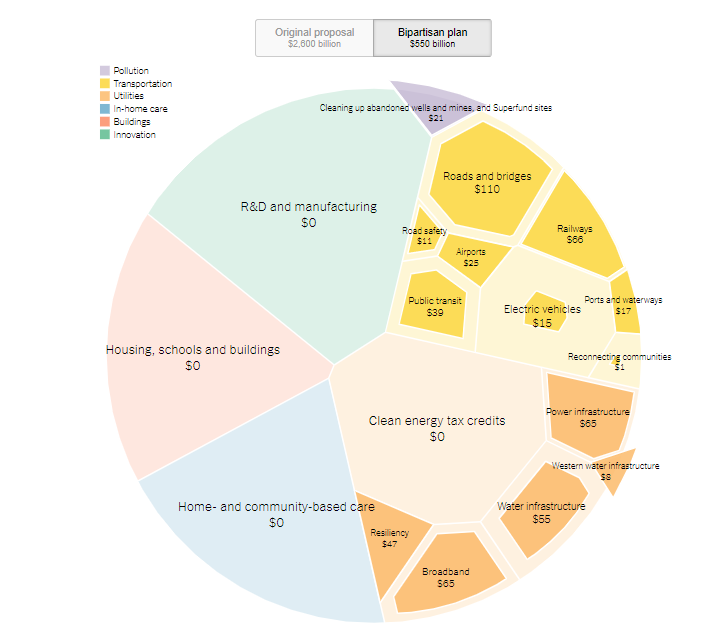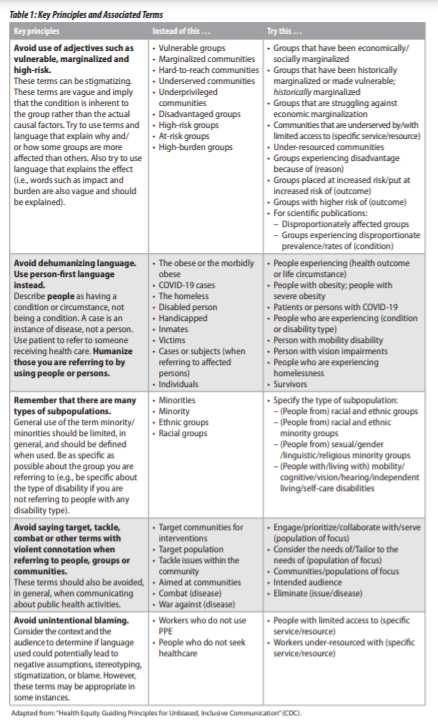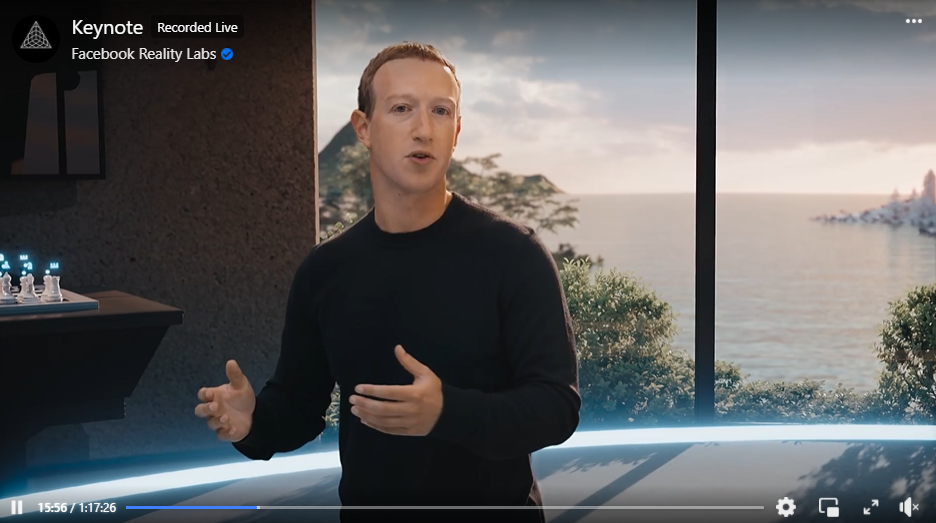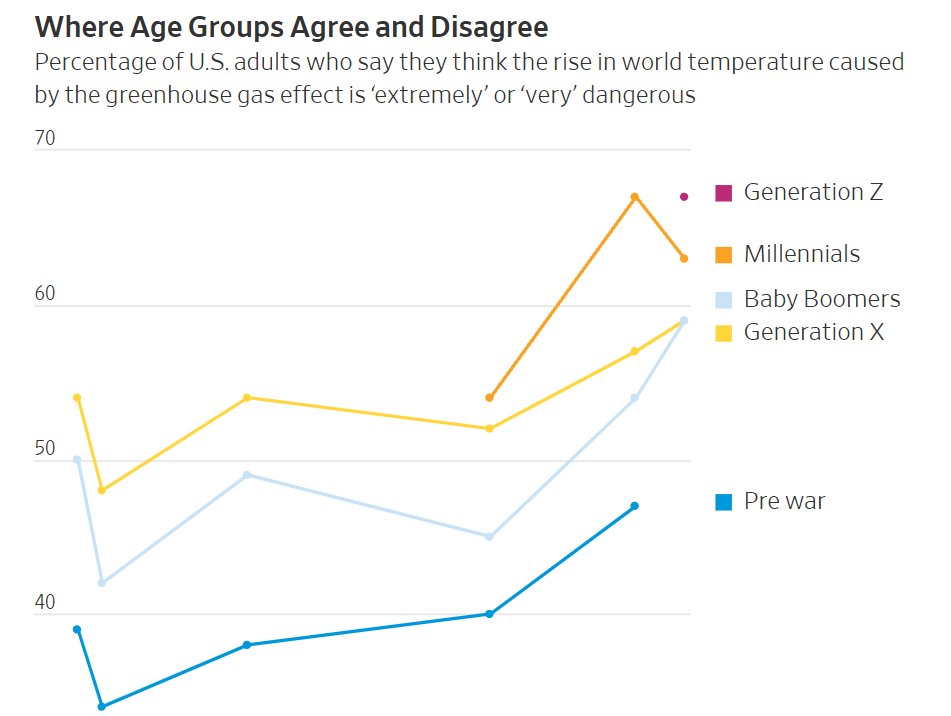Peloton Addresses Death (Spoiler Alert)
Sex in the City spoiler alert: Mr. Big dies after a vigorous workout on a Peloton bike. The first episode of the HBO reunion show, “And Just Like That,” has Carrie Bradshaw’s husband sweating with “Allegra,” played by real-life Peloton instructor Jess King.
Company leaders were as surprised as viewers. A spokesperson said they approved King’s role and supplied a bike but had no idea how the scene ended. In a statement, an on-staff cardiologist blamed Mr. Big—a convenient, now deceased fictional character:
"I'm sure SATC fans, like me, are saddened by the news that Mr. Big dies of a heart attack. Mr. Big lived what many would call an extravagant lifestyle—including cocktails, cigars, and big steaks—and was at serious risk as he had a previous cardiac event in Season 6. These lifestyle choices and perhaps even his family history, which often is a significant factor, were the likely cause of his death. Riding his Peloton Bike may have even helped delay his cardiac event."
HBO declined to comment on the situation, and Peloton will be more careful about product placements in the future. Vulture called the episode “the worst Peloton ad ever.” After the episode aired, shares fell 11%, further challenging a company struggling with declining sales and product recalls.
Update: Although Peloton may have grounds for a lawsuit, so far, the company is taking a different approach. In a parody ad produced within just a few days, Peloton hired Mr. Big actor Chris Noth to play the character, alive and flirting with the instructor. A voiceover reminds viewers of the benefits of cycling.
Layoffs by Zoom Call + Updates
The CEO of U.S. mortgage company Better.com announced via Zoom that 900 employees, about 15% of the company, were being laid off. Vishal Garg invited people in the exiting group to the call and then dropped the news: “If you’re on this call, you are part of the unlucky group being laid off. Your employment is terminated effective immediately.” In a way, the Zoom call replaces an email typically sent to all employees before they meet individually with an HR representative.
The video is circulating on YouTube, and we hear one employee’s reaction as she watches: “You’ve gotta be kidding me. After all we did for the company! . . . I can’t believe this. This is not real.”
Certainly, this doesn’t reflect well on the company, particularly because it’s right before year-end holidays. News articles also question Garg’s management style and financial dealings. After the layoffs, he was quoted accusing employees of “stealing” from their coworkers by being unproductive. Reports also mention an email sent to staff, including, "You are TOO DAMN SLOW. You are a bunch of DUMB DOLPHINS... SO STOP IT. STOP IT. STOP IT RIGHT NOW. YOU ARE EMBARRASSING ME.” In addition, Garg faces lawsuits claiming fraudulent activity and misappropriation of funds.
History aside, CNN describes the Zoom call as “short and emotionless.” At times, Garg focuses more on himself than on employees. He said, “This is the second time in my career I'm doing this, and I do not want to do this. The last time I did it, I cried.”
I will give him credit for taking responsibility during the call, saying it was his decision. He also scheduled a call instead of, say, sending an email. He demonstrated accountability and some courage, but Garg lacked compassion. Overall, I’ve seen worse, for example, layoff by text message.
UPDATES: Garg wrote an apology about how he handled the situation. Although he uses the words “I apologize” and describes some of the impact on employees, the audience doesn’t seem quite right. He writes about the future, which includes employees who are staying but not the 900 who were on the Zoom call.
The Better.com board of directors announced that Garg will take some time off. Perhaps his worst crime is that the video went viral; he should have predicted that.
American Airlines Leadership Announcement
In a video and website statement, American Airlines announced a new CEO. President Robert Isom will succeed Doug Parker, who served as CEO for two decades. Parker will become the board chair.
The company statement is typical, with glowing quotes to be easily lifted into news articles. A two-and-a-half-minute video of Isom and Parker is upbeat, with each executive complimenting the other. The primary audience is employees, although the video is posted on YouTube, clearly intended for the press and public as well.
Obviously scripted, the video includes some staid language, for example, “I’m confident that now is the right time,” “with change, comes opportunity,” and “together, we will achieve great things.” What a great example to analyze with class. I wonder how students would describe the communication objectives and assess the delivery style and how well the executives achieved their purpose.
Funny Song About Commas
Just in time for Christmas, lyrics set to the tune of "God Rest Ye Merry, Gentlemen" explore possible comma placements. It’s a fun look of how commas change meanings.
Dorsey’s Resignation Email
After co-founding and leading the company, Jack Dorsey has resigned from Twitter. He was with Twitter for 16 years and says now is the right time to create some distance from the company founders. In a email to employees, which he tweeted for transparency, Dorsey describes his confidence in the new CEO, Parag Agrawal, and board chair.
The email reminds me of “One Last Time” in Hamilton, in which George Washington explains that he won’t run again for president. Dorsey seems to know that his time is up, and he is making space for others.
He may be tired of the pressure on tech companies, including an activist investor. Dorsey also continues to serve as CEO of Square.
His email lacks some more common features of CEO resignations. I expected to see a recount of Twitter’s successes going back to the early days, but we read none of that. Perhaps Jack is, as he says, ready to move on.
Emojis at Work
Should you use emojis in work emails? A Wall Street Journal writer says no based on a 2020 Computers in Human Behavior study about how women interpret the symbols.
Psychology researchers at Wayne State University found that women interpret negative emojis more negatively than do men. For example, the lead author described reactions to the thinking emoji: “Men see that as slightly positive, women as slightly negative.”
However, college students were the subjects in this study, and the authors say the results are consistent with the emotional negative bias. They describe the bias and explain that it is greater in women than in men: “young adults exhibit greater attention and memory for negative over positive information.” The bias lessens as people turn middle-aged, and then a positivity bias is more prevalent.
So, you might consider the age of your coworkers as you decide whether to use emojis. One function of emojis is to convey subtle emotion when words alone fail. But they may be just as confusing and open to interpretation as text.
CVS Statement on Jury Decision
A jury found that Walmart, Walgreens, and CVS contributed to the opioid crisis and will have to pay damages to Ohio counties. Plaintiffs argued that, as a New York Times article explains, pharmacists are “gatekeepers who have a duty to question suspicious prescriptions.”
The drug stores will likely appeal, and CVS published a statement disputing the decision:
We strongly disagree with the decision. Pharmacists fill legal prescriptions written by DEA-licensed doctors who prescribe legal, FDA-approved substances to treat actual patients in need.
We’re proud of the substantial work we’ve done to support our pharmacists in detecting illegitimate prescribing. But the simple facts are that opioid prescriptions are written by doctors, not pharmacists; opioid medications are made and marketed by manufacturers, not pharmacists; and our health care system depends on pharmacists to fill legitimate prescriptions that doctors deem necessary for their patients. We look forward to the appeals court review of this case, including the misapplication of public nuisance law.
As plaintiffs’ own experts testified, many factors have contributed to the opioid abuse issue, and solving this problem will require involvement from all stakeholders in our health care system and all members of our community.
CVS uses a classic crisis-communication strategy to deflect blame: zoom out and look at the entire system. True, the opioid crisis is complex, but this jury found that pharmacists are part of the problem and should be held accountable.
Jack in the Box Statement: More Well Wishes
Restaurant workers across the country are demanding higher wages and better working conditions, and Jack in the Box is one targeted group. In California, unions are lobbying for The Fast Recovery Act, which would hold corporate offices accountable if franchisees don’t comply with regulations. Today, that responsibility lies with individual stores, making it more difficult for employees to get mandatory Covid 19 protections and sick pay.
A local Jack in the Box didn’t response to a PBS NewsHour request for comment, but the corporate office sent a statement. I see the message only on the video (at 4:33), so here’s a blurry image. Note the much-maligned “hope you are well”—two variations. The first, in slightly larger font, looks like part of a template that wasn’t deleted. In this case, both are superfluous and insincere—like announcing the author’s name, which is at the bottom of the note, and the rest of the statement, in my opinion.
Nothing in the message acknowledges problems or provides plans to improve the situation. It’s defensive and does not inspire confidence in the brand. I see a lack of accountability and willingness to be vulnerable and learn from failure.
Visualizing Big Numbers
President Biden’s “Build Back Better” infrastructure plan may be difficult to visualize. When we consider trillions of dollars, traditional business charts—bars, pies, and lines—may not be the best choice.
Here are a few visualizations to compare:
Pie pieces (shown here)
These aren’t perfect comparisons because they cover different categories and are from different points in time, but they do give us options to help audiences understand data. What other visualizations can you find, and which are most effective for what purpose?
Language Choices
A new report has been criticized from both sides of the political aisle. Published by the American Medical Association and the Center for Health Justice, “Advancing Health Equity: A Guide to Language, Narrative, and Concepts,” is described as an “equity document.” Its purpose is to provide guidance to physicians and healthcare workers.
Some recommendations seem appropriate, while others seem impractical or, as a New York Times opinion writer called them, “absurd.” Michelle Goldberg gives an example:
“The guide suggests replacing ‘vulnerable’ with ‘oppressed,’ even though they’re not synonymous: it’s not oppression that makes the elderly vulnerable to Covid.”
Key principles include avoiding using stigmatizing and dehumanizing adjectives, avoiding generalizations, avoiding language with violent connotations, and avoiding unintentional blaming. The report suggests “people-first" language, which I suggest in the textbook—when appropriate.
I wonder how students feel about the more specific recommendations in the report: Which would they follow, and which seem silly or unnatural?
Robinhood's Breach Notice
In a blog post, Robinhood announced a “data security incident.” Business communication students will notice several examples of downplaying the situation, including giving numbers of people affected more significantly (310) but no numbers for the total.
Language seems intentionally complex, for example, “The unauthorized party socially engineered a customer support employee by phone and obtained access to certain customer support systems.” In other words, someone called a Robinhood employee and impersonated another employee. The employee fell for this deceit without seeking proof.
Robinhood seems to take no responsibility and identifies no plans for future action to prevent a similar “incident.” The chief security officer provides template text: “As a Safety First company, we owe it to our customers to be transparent and act with integrity. Following a diligent review, putting the entire Robinhood community on notice of this incident now is the right thing to do.”
Research About Groupthink
Groupthink causes poor decision making because members come to the same conclusions, failing to see alternatives. You might think the trouble is with homogeneous teams, but a Wall Street Journal article clarifies the types of teams most susceptible to this limited thinking.
The faculty authors describe three sets of teams and ask which is “the most likely to fall prey to the pathologies of groupthink”?
A friendly team of long-term colleagues or a new collection of co-workers who haven’t had time to form close personal bonds?
A team composed of the usual suspects or that same team where an outsider has been brought in to provide a fresh perspective?
A group with a confident leader who has a clear vision of how to do things or a relatively unstructured group without a strong authority figure?
In each, the second team is more vulnerable. Concepts like group identity and psychological safety are at play. Although paradoxical in some ways, a close group of friends who feel comfortable with each other are more likely to offer divergent ideas.
Throughout my career, I have tried different approaches to assigning student teams. This article makes me feel good about the times I’ve let students choose their own teams. Of course, that causes other problems, but groupthink was not likely one of them.
Skewed Chart Example
Dopesick on Hulu includes a great example of a compressed chart scale. The show is about the opioid crisis and features the Sackler family and Purdue Pharma’s role in convincing doctors that OxyContin is not addictive. To prove the point, Purdue shared this graph, showing that the “time release” capsules don’t cause mood spikes (“fewer peaks and valleys”). The trouble, as business communication students can observe, is the Y axis.
In Episode 6 (around 21 minutes), we hear the explanation: “But see what Purdue did? They dramatically compressed the scale.” On the chart, we see that 30 looks to be the midpoint. They used a logarithmic instead of a linear scale to homogenize or “smooth out” the data. (Here’s a good explanation of logarithmic scales.)
In the show, an FDA official says they instructed Purdue Pharma not to use the chart, but the company did anyway. Of course, I’m not sure what happened, exactly, and I didn’t get the court filings to verify the chart.
The show offers many other examples of the company’s persuasive communications and the tragic effect on people’s lives. For more research about Purdue’s misleading communications, see this LA Times article. Also read a fascinating trove of Purdue emails here.
Language Choices
A New York Times writer explores language “on the left,” meaning political liberals. The article also helps us understand choices for business communicators and my challenges revising Business Communication and Character (11e).
The first sentence of the article includes the word “freshman,” and already I have questions. At Cornell, we have been using “first-year” as a gender-neutral term for some time. Of course, this only exemplifies the Amy Harmon’s point about changing language.
Harmon describes frustration on all political sides, including needing to adapt to changing language, skepticism about “wokeness,” and choosing semantics over action
I fear that my book, revised but not yet published, is already out of date. Did I give “BIPOC” and “Latinx” too much attention and “LGBTQIA+” too little? Should I have addressed “wokeness”? I’ll wrestle with all this in the 12th edition.
Facebook Becomes “Meta”
In the midst of controversy after internal documents were made public, Facebook is trying to reinvent itself with a new name: Meta. The company promises that “the metaverse will be social. 3D spaces in the metaverse will let you socialize, learn, collaborate and play in ways that go beyond what we can imagine.” After staying behind the scenes for the past few weeks, as the press cited internal strife as evidence of the company’s wrongdoing, Facebook’s CEO and Founder Mark Zuckerberg is out in front.
In a 1 hour and 17 minute video, Zuckerberg focuses on the “immersive experience” we’ll enjoy in the future. He emphasizes connection, which has been the company vision since around 2017.
Perhaps in a nod to the ongoing criticism of apps’ negative influence and relentless draw through algorithms, Zuckerberg says, “This isn’t about spending more time on screens. It’s about making that time we already spend better.” Of course, some of us still want to spend less time and want the same for our children. Zuckerberg also acknowledged, “The last few years have been humbling for me and my company in a lot of ways.”
Reactions to the name change are mixed but seem mostly skeptical. A Washington Post article points to a tweet: “Don’t forget that when Phillip Morris changed it’s name to Altria it was still selling cigarettes that caused cancer.”
Zuckerberg’s video is a good example of a scripted presentation with a (somewhat) conversational style. As he moves about, we see, as the Post describes, “a dizzying array of scenes that showcased the company’s vision for the metaverse. It included Zuckerberg doing his favorite water sport, hydrofoiling, with friends in a virtual environment, and then jumping into work meetings from a virtual home office, boxing with virtual avatars and working out on a virtual lily pad.” All this certainly would make me spend more time online and give me more reasons to never leave my house.
Business communication students can also analyze Zuckerberg’s “letter,” referring to a formal public message—not, of course, something mailed. I would say the same for the “keynote,” which is unlike any I’ve ever seen.
Congressman's "Bizarre" Video
Jeff Fortenberry, U.S. representative for Nebraska, was facing indictment for falsifying and concealing information and for lying to investigators about 2016 campaign contributions. In a video called “unusual” and “bizarre,” Fortenberry speaks to the camera from his truck with his wife and dog in the background. He says they are “out for a drive” in his 1963 Ford pick-up.
The video is an interesting attempt at authenticity to sway public opinion. Fortenberry wants us to believe that he is a trustworthy, everyday man—a victim rather than a criminal. He tells the story of FBI agents coming to his house “on a weekend” after a cyclone hit. With an incredulous tone, Fortenberry says, “We’re shocked. We’re stunned. I feel so personally betrayed.”
I wonder what counsel Fortenberry received or whether it was his own idea to create the video. Either way, based on the news reports and the indictment, which came later that day, Fortenberry’s message did not favorably affect the outcome for him. His arraignment is planned for later this week.
Overblown Generational Differences
Finally, a mainstream article, “The Bunk of Generational Talk,” describes exaggerated differences among age groups. Categorical thinking contributes to imagined “gaps” and tropes. With random year divisions, naming generations only reinforces stereotypes.
The article author, a professor of public policy, provides research showing that most differences among generations are driven by factors other than generation alone. For example, beliefs about climate change have tracked fairly closely over time. He summarizes the issue well:
“Our wrongheaded thinking about generations leads us to focus on the wrong problems. Headlines about spendthrift young people, for example, distract us from the huge shift in economic policy in recent decades toward the interests of older people. We avoid facing up to a challenge like climate change by laying the blame on older generations while placing our expectations for salvation on the coming generation. Across a range of issues, manufacturing fake generational battles denies us the benefits of intergenerational connection and solidarity.”
Business Communication and Character describes ways to work and communicate across differences—not invent differences to mock and scorn.
CDC Director Has a More Nuanced Approach
A New York Times writer compares CDC Director Dr. Rochelle Walensky’s vaccine messaging in different settings. Analyzing a podcast with someone Walensky likely considers a colleague, David Leonhardt describes her tone and approach as more conversational. He also identifies examples of Walensky’s acknowledgment of a “risk-benefit” assessment—more nuanced communication than we hear from the CDC in its official guidance on news media programs.
Leonhardt gave another example of Walensky’s more flexible stance on vaccines:
Walensky began her answer by restating official C.D.C. policy: “We’re not currently recommending it.” But then she added the fuller truth: “I’ll tell you what we do know, and some places where I think people might veer from standard guidance.”
He summarizes what could be more helpful in health communications:
“Health officials are frequently unwilling to take that second step in public. When confronted with uncertainty, they do not acknowledge it. They ignore gray areas and talk in black and white.”
This situation exemplifies humility as a character dimension. Leaders who admit uncertainty—that they don’t know everything and are still learning—may be more persuasive, not less.
Leonhardt is also describing integrity and, more specifically, transparency. Consistency in messaging, including giving a fuller picture, could help people make rational choices for themselves. That might not result in outcomes the CDC wants—or it might, but not in the exact timeframe or terms that the CDC dictates. As Leonhardt says, “the full truth” would give people more agency and could cause less backlash against prescriptive guidelines.
Failing Data Analysis in the Theranos Trial
The criminal trial against Theranos Founder and former CEO Elizabeth Holmes now focuses on testimony from Safeway, Walgreens, and Johns Hopkins University. Questions involve how these companies evaluated Theranos’ blood-testing technology and concluded that it was sound when, in fact, results was consistently false.
At this point in the trail, investors blame Holmes, whose defense is that the companies did due diligence and are responsible for their decisions. A Wall Street Journal article about the arguments highlights the companies’ and the university’s failings and over-reliance on Holmes’ claims.
As the relationship between Safeway and Theranos progressed, CEO Steve Burd wrote an email to Theranos with the subject, “Becoming Discouraged.” He testified, “I think whenever you start something new you’re going to have some rough spots, but we continued to have rough spots. We had samples that were lost. We had results that didn’t make any sense.”
We’ll see how the trial evolves, but clearly, experts needed to ask more questions up front. In some cases, they didn’t test the actual technology themselves. This story is a good example of failures in integrity and data analysis—perhaps for many involved.
Bad-News Message: Hasbro CEO
Toy company Hasbro announced the death of Chairman and CEO Brian Goldner. The press release is typical, quoting leaders and touting Goldner’s contributions to the company. Goldner was with Hasbro for more than 20 years and served as CEO for more than 13, so his death is significant.
Interestingly, the company statement doesn’t include a cause of death. A Wall Street Journal article mentions Goldner’s prostate cancer diagnosis in 2014 and his recent leave of absence.
Visionary CEO Transformed Hasbro into a Global Play & Entertainment Leader
PAWTUCKET, R.I.--(BUSINESS WIRE)--Oct. 12, 2021-- It is with deep and profound sadness that Hasbro announces the passing of beloved leader and longtime Chairman and CEO Brian D. Goldner.
This press release features multimedia. View the full release here: https://www.businesswire.com/news/home/20211012006149/en/
Brian D. Goldner (Photo: Business Wire)
Rich Stoddart, Interim CEO, said “Since joining the Company more than two decades ago, Brian has been the heart and soul of Hasbro. As a charismatic and passionate leader in both the play and entertainment industries, Brian’s work brought joy and laughter to children and families around the world. His visionary leadership, kindness, and generosity made him beloved by the Hasbro community and everyone he touched. On behalf of the Hasbro family, we extend our deepest, heartfelt condolences to his wife, daughter, and entire family.”
Mr. Goldner, 58, joined Hasbro in 2000 and was quickly recognized as a visionary in the industry. He was appointed CEO in 2008 and became Chairman of the Board in 2015. He was instrumental in transforming the Company into a global play and entertainment leader, architecting a strategic Brand Blueprint to create the world’s best play and storytelling experiences. Through his tireless work ethic and unwavering focus, he expanded the Company beyond toys and games into television, movies, digital gaming and beyond, to ensure Hasbro’s iconic brands reached every consumer. The culmination of his pioneering strategy was the 2019 acquisition of independent entertainment studio eOne. Mr. Goldner served on the Board of Directors of ViacomCBS and was the Chair of the Compensation Committee. Mr. Goldner and his wife Barbara were passionate advocates for improving systems of care for vulnerable members of society.
Edward M. Philip, Lead Independent Director of Hasbro’s Board of Directors, said “Brian’s passing is a tremendous loss for Hasbro and the world. Brian was universally admired and respected in the industry, and throughout his over twenty years at Hasbro, his inspiring leadership and exuberance left an indelible mark on everything and everyone he touched. A mentor and friend to so many, his passion and creativity took Hasbro to new heights. Our love and thoughts are with his wife, daughter, and family during this extraordinarily sad time.”



